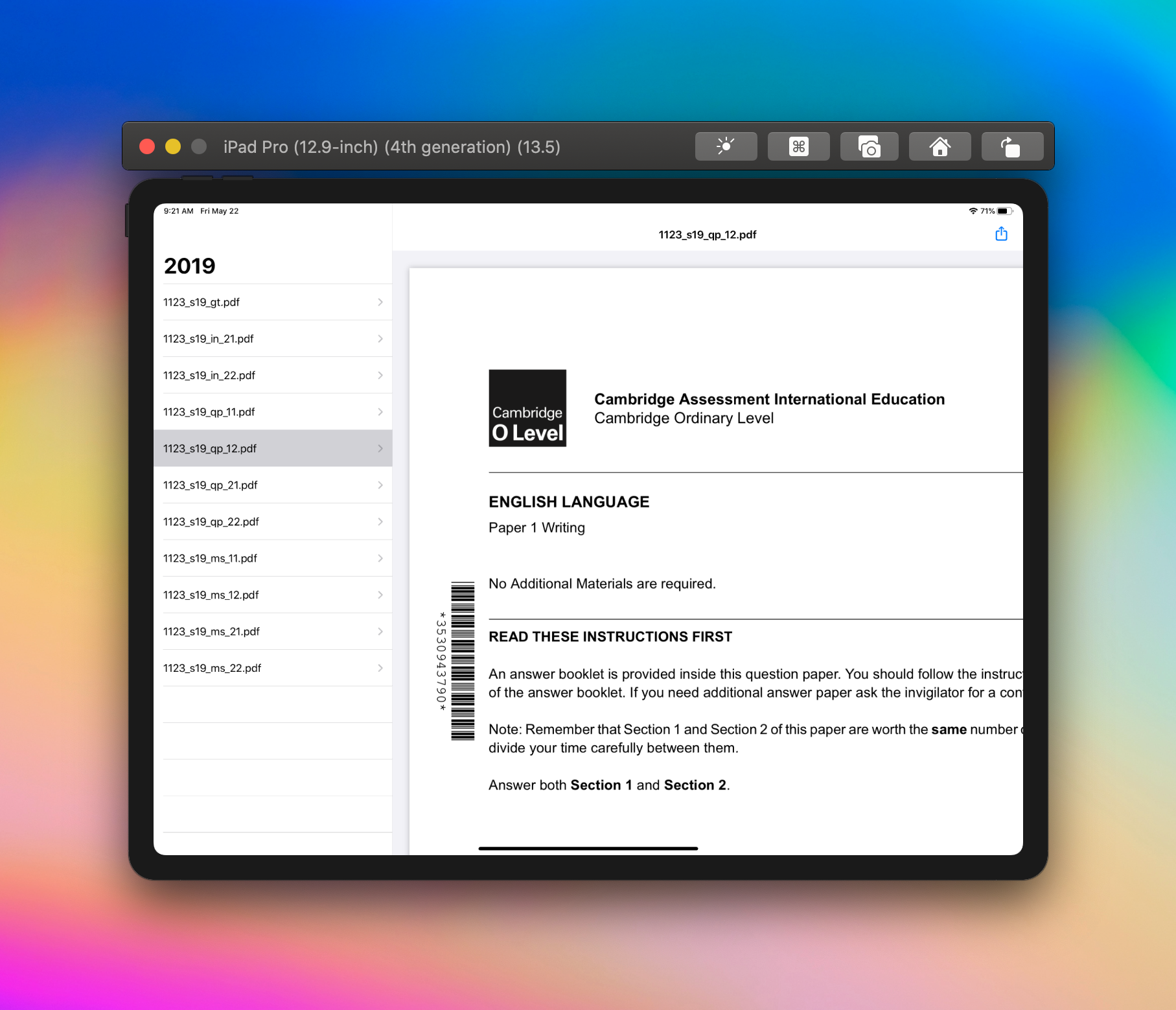Last active
October 13, 2023 19:36
-
-
Save joshbetz/90226e00af03cb8634c0e31c5c85bf04 to your computer and use it in GitHub Desktop.
SwiftUI Webview with a Progress Bar
This file contains bidirectional Unicode text that may be interpreted or compiled differently than what appears below. To review, open the file in an editor that reveals hidden Unicode characters.
Learn more about bidirectional Unicode characters
| struct Webview: UIViewControllerRepresentable { | |
| let url: URL | |
| func makeUIViewController(context: Context) -> WebviewController { | |
| let webviewController = WebviewController() | |
| let request = URLRequest(url: self.url, cachePolicy: .returnCacheDataElseLoad) | |
| webviewController.webview.load(request) | |
| return webviewController | |
| } | |
| func updateUIViewController(_ webviewController: WebviewController, context: Context) { | |
| // | |
| } | |
| } | |
| class WebviewController: UIViewController, WKNavigationDelegate { | |
| lazy var webview: WKWebView = WKWebView() | |
| lazy var progressbar: UIProgressView = UIProgressView() | |
| deinit { | |
| self.webview.removeObserver(self, forKeyPath: "estimatedProgress") | |
| self.webview.scrollView.removeObserver(self, forKeyPath: "contentOffset") | |
| } | |
| override func viewDidLoad() { | |
| super.viewDidLoad() | |
| self.webview.navigationDelegate = self | |
| self.view.addSubview(self.webview) | |
| self.webview.frame = self.view.frame | |
| self.webview.translatesAutoresizingMaskIntoConstraints = false | |
| self.view.addConstraints([ | |
| self.webview.topAnchor.constraint(equalTo: self.view.topAnchor), | |
| self.webview.bottomAnchor.constraint(equalTo: self.view.bottomAnchor), | |
| self.webview.leadingAnchor.constraint(equalTo: self.view.leadingAnchor), | |
| self.webview.trailingAnchor.constraint(equalTo: self.view.trailingAnchor), | |
| ]) | |
| self.webview.addSubview(self.progressbar) | |
| self.setProgressBarPosition() | |
| webview.scrollView.addObserver(self, forKeyPath: "contentOffset", options: .new, context: nil) | |
| self.progressbar.progress = 0.1 | |
| webview.addObserver(self, forKeyPath: "estimatedProgress", options: .new, context: nil) | |
| } | |
| func setProgressBarPosition() { | |
| self.progressbar.translatesAutoresizingMaskIntoConstraints = false | |
| self.webview.removeConstraints(self.webview.constraints) | |
| self.webview.addConstraints([ | |
| self.progressbar.topAnchor.constraint(equalTo: self.webview.topAnchor, constant: self.webview.scrollView.contentOffset.y * -1), | |
| self.progressbar.leadingAnchor.constraint(equalTo: self.webview.leadingAnchor), | |
| self.progressbar.trailingAnchor.constraint(equalTo: self.webview.trailingAnchor), | |
| ]) | |
| } | |
| // MARK: - Web view progress | |
| override func observeValue(forKeyPath keyPath: String?, of object: Any?, change: [NSKeyValueChangeKey : Any]?, context: UnsafeMutableRawPointer?) { | |
| switch keyPath { | |
| case "estimatedProgress": | |
| if self.webview.estimatedProgress >= 1.0 { | |
| UIView.animate(withDuration: 0.3, animations: { () in | |
| self.progressbar.alpha = 0.0 | |
| }, completion: { finished in | |
| self.progressbar.setProgress(0.0, animated: false) | |
| }) | |
| } else { | |
| self.progressbar.isHidden = false | |
| self.progressbar.alpha = 1.0 | |
| progressbar.setProgress(Float(self.webview.estimatedProgress), animated: true) | |
| } | |
| case "contentOffset": | |
| self.setProgressBarPosition() | |
| default: | |
| super.observeValue(forKeyPath: keyPath, of: object, change: change, context: context) | |
| } | |
| } | |
| } |
I am also having a problem with constraints, particularly with the bottom restraint. Part of the bottom of the webpage is blocked off, and I am unable to click anything on the bottom portion of the webpage.
https://medium.com/macoclock/how-to-use-webkit-webview-in-swiftui-4b944d04190a
Use this one if you want better constraint management
Updated this with better constraint management, although that example looks nicer in general.
Sign up for free
to join this conversation on GitHub.
Already have an account?
Sign in to comment
Hi, your code is wonderful, but I have some problems when setting the constraints of the web view. Because on iPad, the web view will be scaled. Could you help me to solve the problem? Thanks
